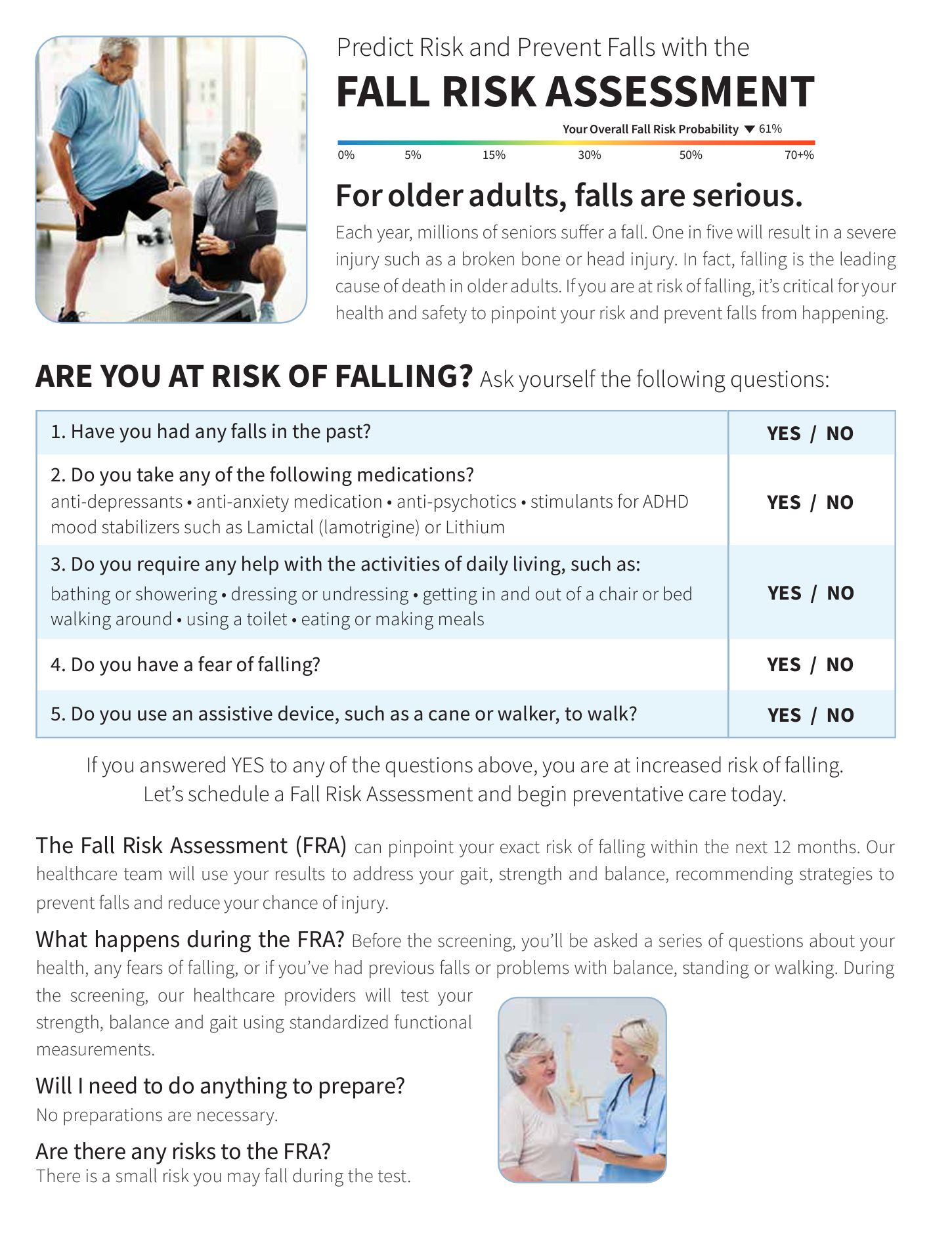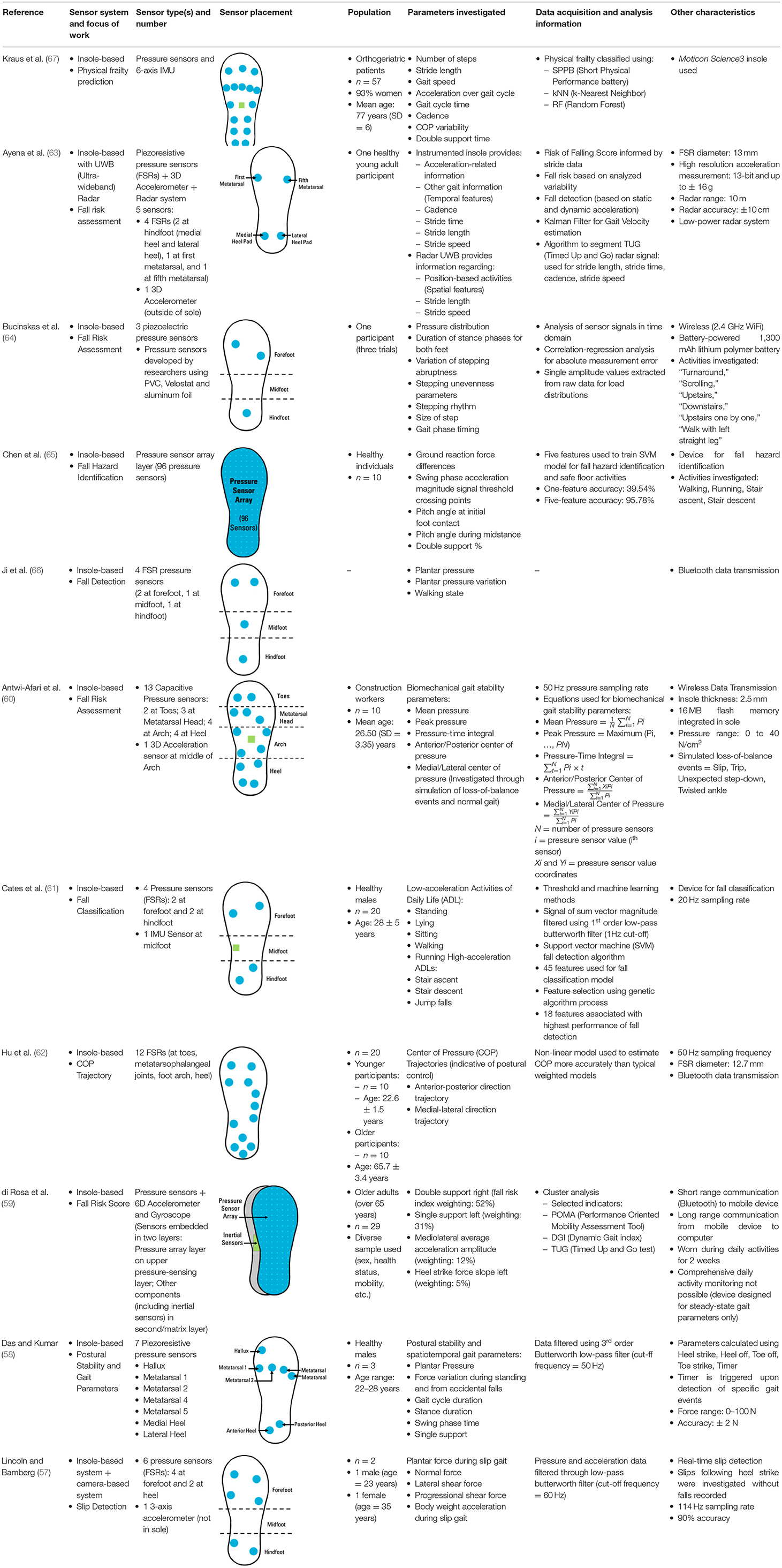How Dementia Fall Risk can Save You Time, Stress, and Money.
How Dementia Fall Risk can Save You Time, Stress, and Money.
Blog Article
Unknown Facts About Dementia Fall Risk
Table of ContentsNot known Facts About Dementia Fall RiskThe Ultimate Guide To Dementia Fall RiskAll about Dementia Fall RiskThe smart Trick of Dementia Fall Risk That Nobody is Discussing
A fall threat assessment checks to see how likely it is that you will drop. The analysis normally includes: This consists of a series of concerns concerning your overall wellness and if you've had previous falls or problems with balance, standing, and/or strolling.STEADI includes screening, analyzing, and intervention. Treatments are suggestions that might minimize your threat of dropping. STEADI consists of three actions: you for your risk of succumbing to your threat elements that can be boosted to try to avoid drops (for instance, equilibrium problems, impaired vision) to reduce your threat of falling by utilizing efficient techniques (for instance, giving education and sources), you may be asked numerous inquiries including: Have you fallen in the previous year? Do you really feel unsteady when standing or strolling? Are you bothered with falling?, your service provider will certainly evaluate your stamina, balance, and stride, making use of the complying with autumn analysis devices: This test checks your stride.
You'll rest down once again. Your copyright will examine for how long it takes you to do this. If it takes you 12 seconds or even more, it might suggest you are at greater threat for an autumn. This examination checks stamina and equilibrium. You'll rest in a chair with your arms crossed over your chest.
Relocate one foot halfway ahead, so the instep is touching the huge toe of your other foot. Move one foot fully in front of the various other, so the toes are touching the heel of your other foot.
What Does Dementia Fall Risk Mean?
Many falls happen as an outcome of multiple contributing aspects; therefore, managing the danger of dropping begins with recognizing the elements that add to drop risk - Dementia Fall Risk. A few of one of the most appropriate danger factors include: Background of prior fallsChronic medical conditionsAcute illnessImpaired gait and balance, reduced extremity weaknessCognitive impairmentChanges in visionCertain high-risk drugs and polypharmacyEnvironmental factors can additionally boost the threat for drops, including: Poor lightingUneven or damaged flooringWet or slippery floorsMissing or harmed handrails and order barsDamaged or improperly equipped tools, such as beds, mobility devices, or walkersImproper use of assistive devicesInadequate supervision of the individuals staying in the NF, consisting of those who show hostile behaviorsA effective fall danger management program needs a comprehensive clinical evaluation, with input from all members of the interdisciplinary team

The treatment strategy ought to likewise include interventions that are system-based, such as those that advertise a secure setting (ideal illumination, hand rails, order bars, and so on). The performance of the treatments ought to be assessed periodically, and the care strategy revised as required to reflect changes in the autumn danger evaluation. Implementing an autumn risk management system using evidence-based finest method can reduce the frequency of falls in the NF, while limiting the potential for fall-related injuries.
The Basic Principles Of Dementia Fall Risk
The AGS/BGS guideline recommends screening all grownups aged 65 years and older for fall threat every year. This screening is composed of asking people whether they have dropped 2 or more times in the previous year or looked for medical interest for an autumn, or, if they have actually not dropped, whether they read more really feel unsteady when strolling.
People that have fallen once without injury needs to have their balance and gait examined; those with gait or balance abnormalities should get extra assessment. A history of 1 loss without injury and without stride or balance issues does not necessitate further analysis past continued annual autumn threat screening. Dementia Fall Risk. A loss threat assessment is needed as part of the Welcome to Medicare evaluation

Getting The Dementia Fall Risk To Work
Recording a falls background is one of the high quality signs for autumn prevention and administration. Psychoactive medications in specific are independent predictors of drops.
Postural hypotension can usually be relieved by decreasing the dosage of blood pressurelowering medications and/or quiting drugs that have orthostatic hypotension as a negative effects. Use above-the-knee assistance hose and sleeping with the head of the bed raised may additionally decrease postural reductions in high blood pressure. The recommended components of a fall-focused physical assessment are received Box 1.

A TUG time higher than or equal to 12 secs recommends high autumn risk. The 30-Second Chair Stand test examines lower extremity strength and equilibrium. Being incapable to stand from a chair of knee height without using one's arms shows increased loss risk. The 4-Stage Equilibrium examination examines fixed equilibrium by having the patient stand in 4 placements, each progressively extra difficult.
Report this page